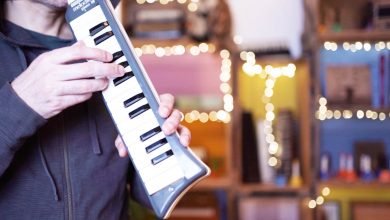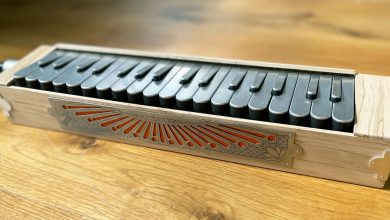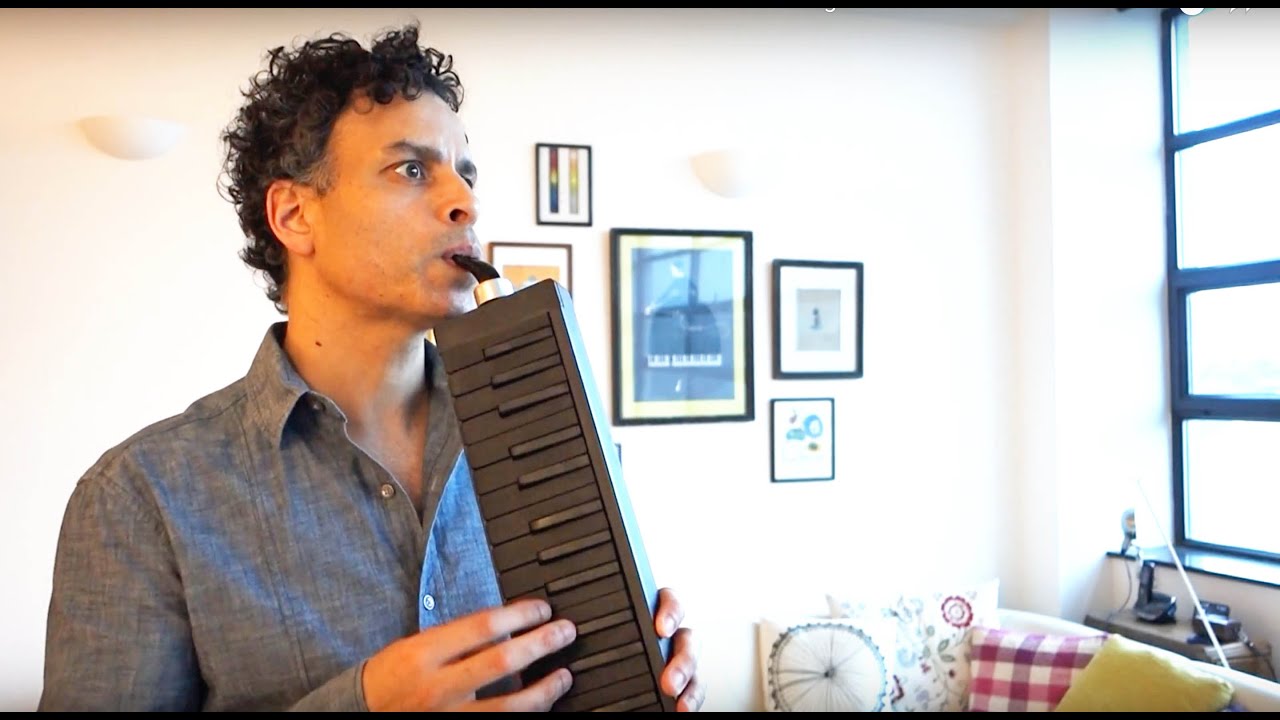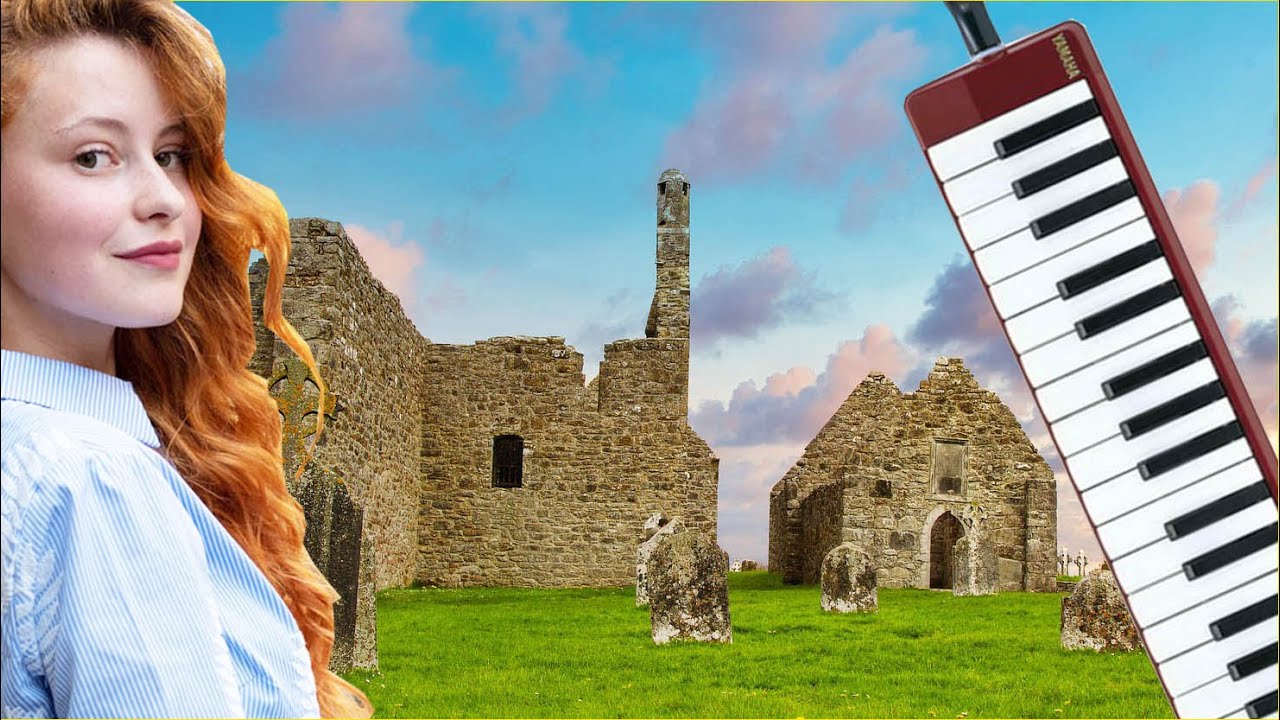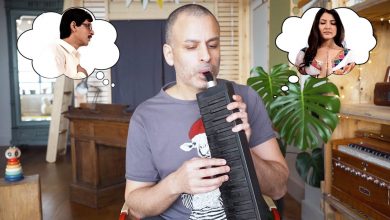How I Came to Play Irish Melodica
I can hardly believe I’ve been playing now for 10 years.
It’s been quite a journey of discovery for me.
I want to share how I’ve been learning to trust and follow my creativity and let go of outcomes.
I’m learning to take risks, and just see what happens.
I hope that you might also learn something from this.
Maybe it will inspire you to set off on your creative journey.
My Irish melodica adventure really kicked off for me with a single incident, just over 10 years ago.
A new friend of mine took me to an Irish pub session she was playing at.
I really didn’t know what to expect.
I was already working as a composer, and I’m even half Irish, but I hadn’t really encountered Irish traditional music before.
Well, something happened to me when I walked though those pub doors.
I walked into this vibrant, joyous atmosphere.
The musicians were in full swing, and those ancient tunes they were playing seemed to speak to my soul.
The music was so full of life and energy, but it also put me in touch with a deep sense of longing and melancholy.
I was struck by how much fun the players were having.
They were chatting, laughing and drinking, until someone spontaneously started a tune, and everyone would join in.
The musicianship was incredible, so fast, and intricate, but played without a care in the world.
I was inspired!
I decided there and then, I was going to learn how to play like that.
Because I wanted to join them at that table, and be part of the great celebration.
I didn’t know how I’d do it, or how long it would take, but I knew it was for me, I needed it.
At the time, I was starting to see some good success as a composer.
It was 2009, and I’d written my first piece for the Rambert Dance Company, which I saw performed at the Southbank Centre.
I’d also made a dark performance art piece called Requiem for the Missing, which was performed in the courtyard of Somerset House with the Trinity Laban Choir
In theory I should’ve been really satisfied, but I wasn’t.
Something wasn’t working, something was missing.
To create these works, I’d spent months working on my own, in my head day after day, if not working on the music, then working out concepts, or funding budgets.
I wasn’t around other musicians.
All my days were spent sitting behind a laptop. My experience of music was a solitary one.
I’d write the music, and other people would play it. And the more work I was getting as a composer, the more time I was forced to spend on my own.
And it was often in a dark, sound proofed room.
I was also writing TV music at the time, and it wasn’t uncommon to work through the night.
I’d be making digital emulations of orchestral music, trying to meet deadlines for clients you only knew through email.
The isolation was a long way from the picture my younger self had of what it would be like to be a composer.
I’m not sure what planet I lived on, but I really thought I’d be hanging out in Bohemian cafes with all my composer friends, or going for walks on Hampstead heath, soaking up inspiration.
Definitely not the reality!
But in Irish music, I had a glimpse of something else.
It wasn’t just the mysterious music, it was how people came together to play it.
People of different standards, from different walks of life, coming together to make music around the table.
The more experienced players were encouraging and helping the newcomers, so that they could in turn help others.
It was a world away from the formal way I had learnt to experience music.
In the classical world, there was a distinct divide between performer and audience.
And the performer would have to spend years in solitary practice, before donning an uncomfortable dinner jacket and hitting the stage.
This was an environment where the audience were too scared to cough, or they were worried about not know when to clap.
And it was no better for the performer, who’d be terrified of making mistakes, or veering too far from the established ‘classical’ interpretations.
To put this in context, when someone messed up at the Irish session, there’d be roars of laughter.
So, how was I going to become part of this?
I already played the piano, and there was a place for piano in Irish music.
But I wasn’t drawn to the Irish piano sound.
I liked the melody instruments, the flute, fiddle and button accordion.
Instead of trying to learn something totally new, I decided to stick with some sort of keyboard instrument, figuring it would get me where I wanted to be, quicker.
I bought a piano accordion, and tried playing some of the tunes.
But for me the sound was too thick, and too loud. I couldn’t get the expression I had in my head.
I thought about learning the concertina, a sound I really love, and an instrument my Irish grandma used to play before I was born.
But when my friend lent me one of his, it seemed too complicated, all those buttons, and a different note when you pull and push the bellows.
But there was this one solution, literally staring at me from my on my living room shelf.
That little instrument that I took down every now and again, and trying to convince my musical friends of its potential.
But no-one would take it seriously, and who could blame them, I’d never taken the time to really learn it.
Of course I’m talking about the melodica.
I’d already been interested in this instrument for a while, and used a wooden one in some classical compositions in the past. But I always thought how nice it would be to be able to play it at its full potential.
Maybe this was the time!
I could learn this instrument while I learnt to play Irish music, kill two birds with one stone.
The more I thought about it, the more it struck me as an amazing pairing.
The internal mechanics of the melodica and basic tone were nearly identical to a concertina.
Maybe with practice I could eventually sound like my favourite concertina player. But I wouldn’t be limited by the button system, and would be able to play in any key.
It was turning into a big project, yet my vision seemed to be getting more and more simple.
It was as if I had this authentic voice somewhere deep within, and I wanted to let it sing.
I chose the melodica and Irish music. But I suppose we all have that inner voice, and everyone will have their own unique way of expressing it.
I was getting excited, and I started planning an adventure.
I thought I’d rent out my flat and travel somewhere a bit remote, where I could have some time and space to hone my craft and practice every day.
There was one place which intuitively appealed to me, and that was the Himalayan mountains in India. I’m actually half Indian (and half Irish), and I’d already been to India several times before this.
This time I thought I’d head to the Dalai Lama’s village.
There I could combine the melodica practice with some meditation retreats. I didn’t think of it at the time, but I suppose I was delving into both sides of my ancestral heritage, by learning Irish music in India.
After a long bumpy journey, I found a simple place to stay, with spectacular views of the mountains.
It was a strange feeling sitting in my new room looking out the window on that first day.
It was beautiful, but I was long way from home, on my own, and feeling a little unsure about how the future would pan out. But I knew what I was there for, and I wasted no time, diving into the practice.
I had my laptop with me, with some of my very favourite Irish music on it. My plan was to choose specific tunes and imitate what I heard, until I got it right.
There was one album I was really drawn to, by my favourite concertina player, Michael O’Raghallaigh (pronounced O’Reilly).
If I could play like O’Raghallaigh, I’d have achieved everything I was looking for.
So I took one of his tunes, and broke it up into tiny sections, repeating it over and over, until I could work out what he was doing.
One big difference in his concertina sound and mine on the melodica, was that I had to keep taking breaths whereas he had this lovely fluid sound.
I realised I was going to have to work out how to circular breath.
So there I was, on top of a mountain in the Himalayas, at the Dalai Lama’s village, surrounded by saffron robed monks.
Who would teach me circular breathing?
Well, I found my master after a little search, on… YouTube!
I ended up spending my time alternating between Irish melodica practice and various local meditation retreats.
And I found that as time went on, the meditation and the practice seemed to be merging. Playing the melodica became a way to put mindfulness into action.
I was learning to focus on practicing without my mind wondering, listening to the sound with full concentration.
And I let the quality of the sound guide me.
This was putting the mindfulness I was practicing to use.
I also started practicing silently, without the breath, becoming aware of the sensations in the body while pressing a key. I experimented with how gently I could press a key, and hold the instrument.
It brought me back to the days when I used to teach the Alexander Technique to musicians.
The playing started to take on an effortless quality.
When I was open, the sound seemed to resonate freely through my body.
I carried on with this practice for around a year in India, before returning home to London, looking forward to seeing my friends again.
Back at home, I spent the next few years living in this amazing shipping container complex on the banks of the river thames in East London. I set up a music studio to earn a living, while I continued my practice.
It took a few years of patient practicing, but I eventually started getting some paid work at the London Irish pub sessions. This was quite an accomplishment for me.
I know it shouldn’t really matter, but getting paid to do something you love can’t help but to give you a good feeling about what you’re doing.
Of course I was playing quite an unconventional instrument in an environment where tradition was important. So occasionally I would come across a disapproving face.
But I’d started making my own instruments now, and a wooden melodica blended in much more, with both the sound and the organic look.
I soon found myself with the urge to test my playing technique under some pressure, so I decided to enter for the first round of the 2017 Fleadh Cheoil (pronounced Flah Cool).
It’s a yearly international competition for traditional Irish music.
The first round was in London, so I didn’t have much to loose. And there was a category just for me, called ‘miscellaneous’ which included the less common instruments, like viola or saxophone.
So I prepared my tunes, and gave it my best shot.
As I suspected might happen, I did find the nerves taking over, and I was making mistakes I’d never made before.
It was because I was playing under new pressures, in an unfamiliar place, while being judged. My mouth was going dry, and I had to swallow while playing, which wasn’t the best sound!
But somehow I got through.
I was invited to the second round, which was also held in London.
This time there’d be competitors from all over the UK, so I knew it would be tougher. But I also knew that I now had the recent experience of playing in a competition, so maybe it wasn’t going to be too overwhelming for me.
I did feel more confident, and I had much less nerves this time.
Amazingly, I got through to the final round.
This put me an a completely unexpected place.
I’d entered the competition to get more experience of playing under pressure, but now had a place in the finals, which took place in the town of Ennis, in Southern Ireland.
It was part of a big annual festival, which typically attracted around 400,000 people. I was way out of my depth.
But at the same time, I thought, how could I not show up?
So I booked a flight, and ended up staying with my mum, who lives near Ennis.
That was a good decision, because the town itself was packed, and I’m someone who needs a bit of space, and peace and quiet around me.
The day of the competition, I went down to the venue, early in the morning.
Luckily the hall was open, and I was able to walk around it on my own.
I played my tunes while sitting in the judges chairs, and I sat in the audience, as well as on stage, where I’d be later.
I went round and actually touched the walls and radiators around the edges of the room, really making it my own space.
The actual competition was later that day, and went on for several hours. I was happy to be one of the first to play.
I actually felt relaxed, and happy that I’d done everything I could do to prepare. Yes, there were nerves and small mistakes, but that was expected, and nothing that worried me too much.
I can honestly say I enjoyed it.
So my original challenge of being able to play under pressure seemed to have paid off, by slowly exposing myself to more and more pressure.
And then to top it all off, I won the silver medal that day, which was amazing and unexpected.
It also gave me a new confidence about playing Irish music on the melodica.
Back in London, with my newly found confidence, I started actively chasing TV soundtrack work where I could specifically play Irish melodica.
Sometimes I’d blend it with classical music, and sometimes it would be in a more traditional setting.
I realised now that following my creative intuition into the unknown was literally paying off, both artistically and financially.
Some lovely credits at this time were the Three Musketeers, on the BBC and Netflix, Moone Boy on Sky, and Ade at Sea on ITV.
I was also working for a library music company which placed my Irish melodica recordings into many other productions for the BBC, like Songs of Praise, and the One Show.
And that’s where I am so far.
When I look back, I’m really pleased that I followed my creative impulse, and dedicated a good decade to something that felt right for me.
It seems to be working out, in its own way.
And who knows what’s next?
Making these melodica videos are part of that same intuitive impulse – I’m following my creativity, taking a risk, and allowing myself to be surprised by the results.
That’s enough about me.
What I’d like to know is what it is you’d love to create?
When you reach deep inside, and feel that creative urge, what does it look like?
Is it tiny, imperceptible, or is it already something you can hardly contain?
And what’s stoping you from following it?

